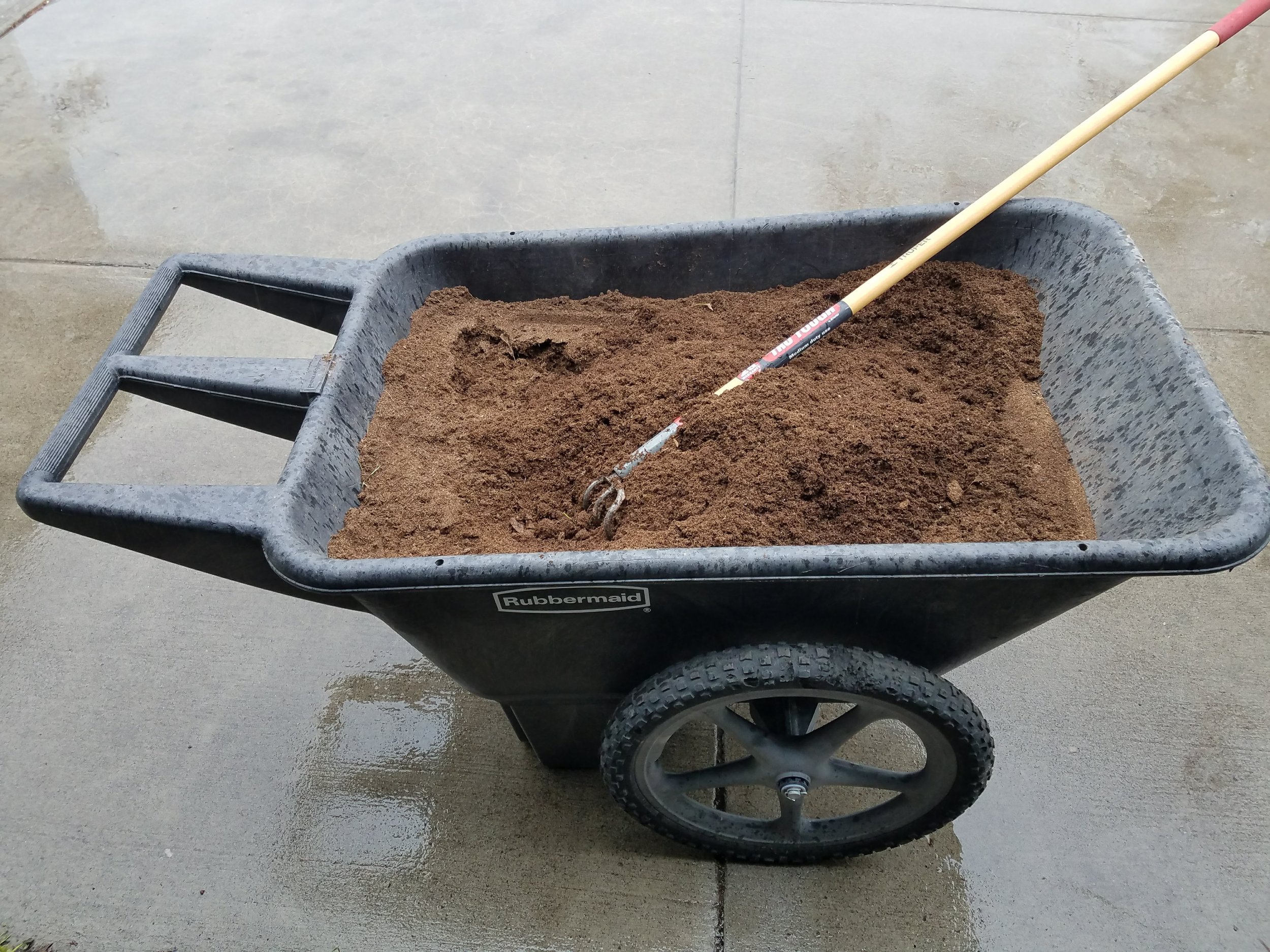Prepping the dirt for gardening!
Garden Week Six 5/1/2018
Prepping the dirt for gardening!
Earlier this month we looked at testing our soil. Now, it is time clean the garden areas of weeds, to make amendments, based on the results of our soil tests, and prepare the dirt for planting.
Before clearing the weeds, I like to know what my soil structure looks like. Because plant roots require oxygen, water, nutrients and vertical area to grow, it is a good idea to check the soil for hardpan.
Hardpan is a compact layer of soil which prevents roots from penetrating into the deep soil, moisture and nutrients. When the plants roots cannot reach down to gather nutrients and water, the roots will grow horizontally, limitng the stability and resources of the roots. Signs of hardpan in your soil will include; rapid wilting, discoloration or yellowing, waterlogging, and ill formed roots. Knowing if you have hardpan will help you in determining how deep you should till or Broadfork the soil.
To determine if you have a hardpan which will interfere with your garden, dig a hole about 24-30 inches deep. Observe the layers of soil. If you find a thick, compact layer of soil, likely clay in this area, note the depth. You may consider doing this in multiple locations to determine the consistency of the hardpan. Once you have located your hardpan, if you have it, you can then determine how deep to till or Broadfork.
I like to fork my area when the soil is damp, but not wet. This loosens the soil and allows me to pull out the deep roots of unwanted plants and weeds. Because I fork, or Broadfork the soil with tines which are 10-20 inches long, I don’t often use a tiller in my garden. When using a tiller be sure the soil is not too wet, as wet soil will make the chore more difficult and limit aeration of the soil. You may find it easier to till over the garden area with a shallower setting first, the make additional passes with deeper settings, depending on the hardness of the soil and hardpan.
If tilling, remember that some plants and weeds spread through their root systems. These broken-down root systems can cause a lot of work later. Taking the time to thoroughly remove weeds prior to tilling, will help with weeding throughout the summer. Do not put weeds, invasive plants, or diseased plants into your compost pile. Dispose of or burn these plants to prevent recurring issues.
At this time, we also want to add our soil amendments. Here in the Rockies and Snake River Plain, we tend to have alkaline or basic soil PH, which means that our soil may test at 7.5 or high on the PH Scale. The higher the PH, the more nutrients are bound up, preventing plants from accessing valuable nutrients. In order to break up this binding, we want to bring our PH balance down. Adding organic matter like compost or peat moss can provide a longer lasting solution. Additional amendments like Elemental Sulfur, or sulfur combination, can provide long term results. Note, these amendments do not provide immediate results as they require time and oxygen to break down into accessible nutrients.
If looking for immediate results, you may consider using an all-around fertilizer found at most garden and hardware stores. These come in both dry and soluble forms. When choosing you fertilizer consider the N-P-K formula or Up-Down-All around formula. N or **Up=**Nitrogen, which encourages green growth; P or **Down=**Phosphorus, which promotes healthy root structures; and K or **All around=**Potassium, which contributes to healthy blooms, fruit and vegetable production. When choosing a fertilizer, it is a good idea to take the results of your soil test to your local garden supply store to help determine what fertilizer may work best for your needs.

Soil Amendments - Measure and mix well. Using ergonomic tools will make the job easier.

Earthworm – helping to aerate and breakdown soil. Nice work!

Fertilizer labels - All fertilizers will have a breakdown of nutrients and what the product is made of.

Earthworm Casting - I use this in my garden starts. I nice subtle nitrogen kick which will not burn my starts.
Planting for the soil you have.
Rather than fight the soil, you may consider growing plants which like your soils PH.
Plants that like or tolerate PH as high as 7.5 include: Artichoke (which tolerate up to 8.0), Bok Choy, Broccoli, Cabbage, Cauliflower, Collards, Dill, Okra, Spinach and Turnips. You may see a trend here. These are often cool weather tolerating green plants as well.
Plants which will prefer a 6.0-7.0 PH balance, includes most vegetables.
Some plants prefer the soil more acidic of 6.8 or lower. This includes: Arugula, Beans, Carrots, Chives, Corn, Eggplant, Leeks, Lettuce, Pumpkins, Radish, Scallions, Shallots, Squash, Tomatoes and Zucchini.
This doesn’t mean your plants will not thrive if the PH is a point or two higher or lower. A general goal of 6.5-7.0 PH should provide a good soil for most garden vegetables you’d like to grow.